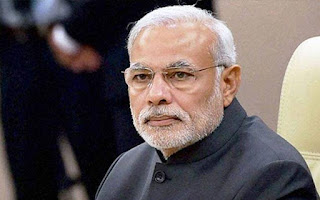4 TAKE AWAYS FROM MODI'S NEW HEALTH POLICY
The UPA government had spent its health policy through the private sector. Consequently, over the last 10 years, the cost of health care has swelled in the country. Led families into poverty and for the first time, the government acknowledges that the health bills has led to poverty.
The NHP says that 63 million people have been forced into poverty because of the high cost of medical care they are enduring as a caregiver or suffering from a disease.
Health policy in India has divided the availability of health care and its costs as two different themes. When caring the cost of health has become so high that it is out of reach of most Indians. However, it could be available but it is so expensive that it is not even considered by the population, especially in critical illness or life-threatening diseases.
NHP 2015 also reduces the gap between urban and rural health services. These are two different buckets and most government spending was dedicated to the construction of a network of rural areas. The UPA-2 has announced a national urban health mission in 2013, but has not allocated any funds for it.
Although health is an important area, including the new generation of games like the Aam Aadmi party, it has never been a central point. Now, with the NHP 2015, it is unlikely that another party will claim this crucial piece.
Here are 4 strategic changes in NHP 2015:
1) Focus on the cost of care and financial security is an important issue and one of the pillars of the NHP 2015. This raises the question of the bare availability of its costs and when people will be able to pay. One of the dangers of health care is that more than 80 percent in private hands is that there was no control over the price or quality. NHP in 2015 deals directly with the question of quality and strives to indirectly direct the price.
2) Set an ambitious target of health spending to 2.5% of GDP. This is an important milestone because currently account health spending for only 1.04% of GDP. This figure is still lower than in many developing countries, including Thailand and Brazil, but it is still important that the goal is to double the current spending.
3) The cost of care or affordable health care is the focus of the new policy and plans to provide service providers and public health. PSN in 2015 speaks of a health card for each family and no income based discrimination for it. This is an interesting change because it is not only the poor who receive the card of health care but all citizens of India. It is almost like a right to access affordable healthcare. Although the policy as a right makes no mention of health care because it is silly idea of giving rights "paper" if you do not have the infrastructure. Basically, the NDA seems to give the idea of giving rights to resist.
4) It is expected that a network of health care at the lowest level consists of health and wellness. The current network of Asha should be replicated in other urban areas with preventive care centers. NHP in 2015 does not mention how many of these centers built up. The second level is that of the centers and primary care hospitals and then on the county level. This is the structure in rural areas. The goal is a bed for 10,000 inhabitants in urban areas.





Comments
Post a Comment